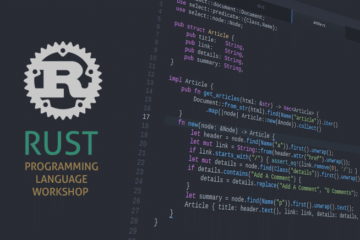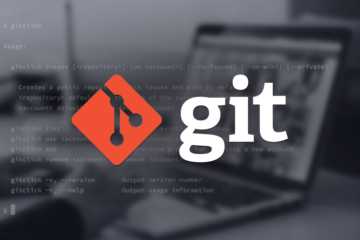In the world of software development, maintaining clean, readable code is paramount. As projects evolve and requirements change, code can quickly become tangled and difficult to understand. This not only hampers productivity but also introduces the risk of introducing bugs and making future modifications more challenging. Enter code refactoring—a systematic process of restructuring existing code without changing its external behavior. In this article, we’ll explore various code refactoring techniques that can help improve code maintainability and readability.
1. So, Why Refactor?
Before diving into specific techniques, let’s understand why refactoring is crucial. Refactoring helps in:
- Maintainability: Clean, well-organized code is easier to understand and modify, reducing the time and effort required for maintenance.
- Readability: Refactored code is easier for developers to comprehend, making it more accessible for future modifications and troubleshooting.
- Scalability: Refactoring lays the groundwork for scalability by removing technical debt and improving the architecture of the code base.
- Bug Fixing: Refactored code tends to have fewer bugs, as it is often more structured and follows best practices.
2. Some Common Refactoring Techniques
a. Extract Method: This technique involves isolating a segment of code into its own method, making the code base more modular and easier to understand. By extracting repeated or complex code segments into separate methods, you enhance readability and promote code reuse.
Before:
def calculate_total_price(items):
total_price = 0
for item in items:
if item['quantity'] > 0:
total_price += item['price'] * item['quantity']
return total_price
After:
def calculate_total_price(items):
total_price = 0
for item in items:
if is_valid_item(item):
total_price += calculate_item_price(item)
return total_price
def is_valid_item(item):
return item['quantity'] > 0
def calculate_item_price(item):
return item['price'] * item['quantity']
b. Rename Variables and Methods: Meaningful names improve code readability and maintainability. Refactoring tools make it easy to rename variables, methods, and classes throughout the code base without breaking functionality. Choose descriptive names that accurately convey the purpose of each component.
Before:
def cal_price(items):
total = 0
for i in items:
if i['qty'] > 0:
total += i['cost'] * i['qty']
return total
After:
def calculate_total_price(items):
total_price = 0
for item in items:
if item['quantity'] > 0:
total_price += item['price'] * item['quantity']
return total_price
c. Remove Duplicate Code: Duplication is a breeding ground for bugs and maintenance headaches. Identifying and removing duplicate code segments not only improves readability but also reduces the risk of inconsistencies and errors. Consider consolidating duplicate code into reusable functions or classes.
Before:
def calculate_area_of_rectangle(length, width):
area = length * width
print("The area of the rectangle is:", area)
def calculate_perimeter_of_rectangle(length, width):
perimeter = 2 * (length + width)
print("The perimeter of the rectangle is:", perimeter)
After:
def calculate_area_of_rectangle(length, width):
area = length * width
print("The area of the rectangle is:", area)
return area
def calculate_perimeter_of_rectangle(length, width):
perimeter = 2 * (length + width)
print("The perimeter of the rectangle is:", perimeter)
return perimeter
d. Simplify Conditional Expressions: Complex conditional expressions can be hard to follow and prone to errors. Break down complex conditionals into smaller, more understandable parts. Consider using guard clauses, ternary operators, or switch statements to simplify logic and improve readability.
Before:
def get_discount(price, is_vip):
if price > 100 and is_vip:
return 0.2
else:
return 0.1
After:
def get_discount(price, is_vip):
discount_rate = 0.2 if price > 100 and is_vip else 0.1
return discount_rate
e. Break Large Methods into Smaller Ones: Long methods are difficult to understand and maintain. Break them down into smaller, more focused methods that perform specific tasks. This not only improves readability but also makes it easier to test and reuse individual components.
Before:
def process_order(order):
# Fetch order details
items = order['items']
customer = order['customer']
# Calculate total price
total_price = 0
for item in items:
total_price += item['price'] * item['quantity']
# Apply discounts
if customer['is_vip']:
total_price *= 0.9
# Generate invoice
print("Invoice for customer:", customer['name'])
print("Total Price:", total_price)
After:
def calculate_total_price(items):
total_price = 0
for item in items:
total_price += item['price'] * item['quantity']
return total_price
def apply_discount(total_price, is_vip):
if is_vip:
total_price *= 0.9
return total_price
def generate_invoice(customer_name, total_price):
print("Invoice for customer:", customer_name)
print("Total Price:", total_price)
def process_order(order):
items = order['items']
customer = order['customer']
total_price = calculate_total_price(items)
total_price = apply_discount(total_price, customer['is_vip'])
generate_invoice(customer['name'], total_price)
f. Optimize Loops and Iterations: Loops are a common source of inefficiency and complexity. Look for opportunities to optimize loops by eliminating unnecessary iterations, using appropriate data structures, or leveraging built-in functions provided by your programming language.
3. Best Practices for Refactoring
- Test-Driven Approach: Refactor with confidence by having a robust suite of automated tests in place. Writing tests before refactoring ensures that the code behaves correctly after restructuring.
- Incremental Refactoring: Break down refactoring tasks into small, manageable chunks. Focus on one aspect at a time, testing and validating changes before moving on to the next.
- Version Control: Use version control systems like Git to track changes and revert if necessary. Commit small, atomic changes frequently to facilitate collaboration and code review.
- Refactoring Tools: Take advantage of refactoring tools provided by integrated development environments (IDEs) or standalone plugins. These tools automate repetitive tasks and help maintain code consistency.
Conclusion: Code refactoring is an essential practice for maintaining a healthy and sustainable code base. By applying the techniques outlined in this article, you can improve code maintainability, readability, and scalability while reducing technical debt and mitigating the risk of bugs. Remember, refactoring is not a one-time activity but an ongoing process that should be integrated into your development workflow.
Happy refactoring!



0 Comments